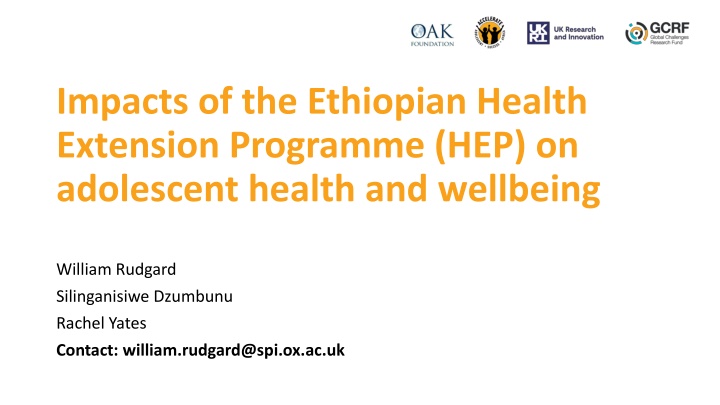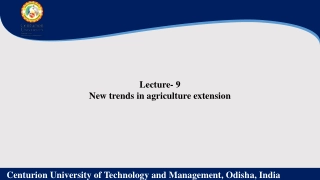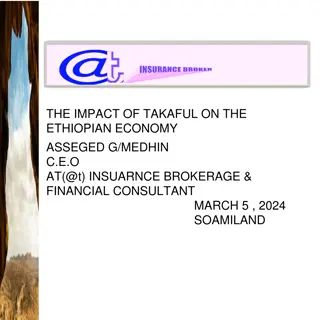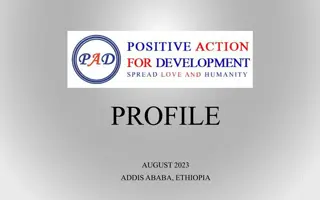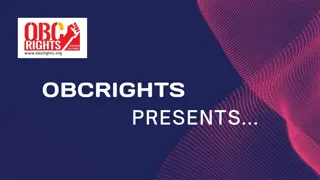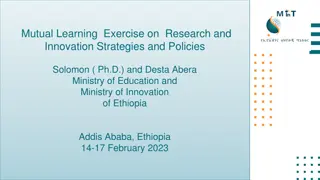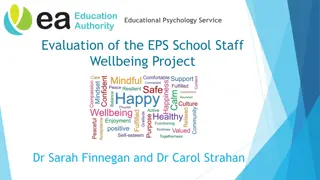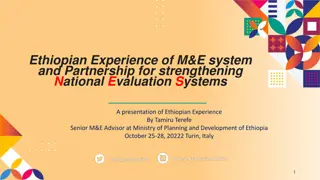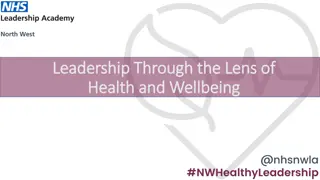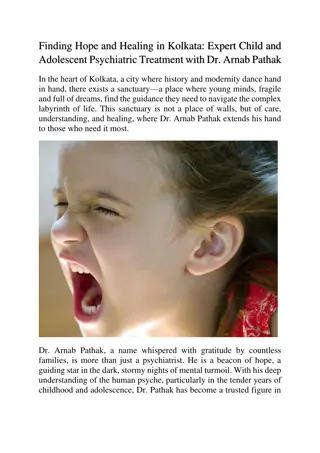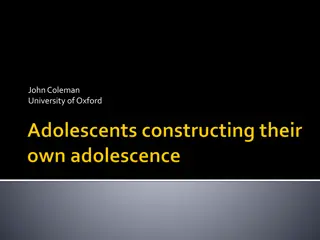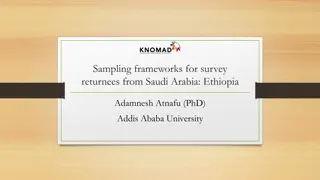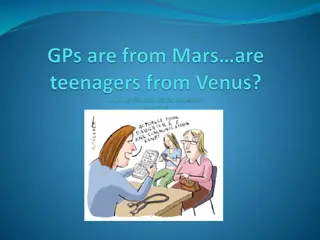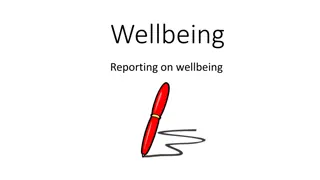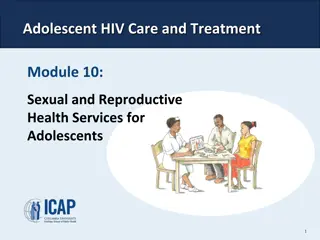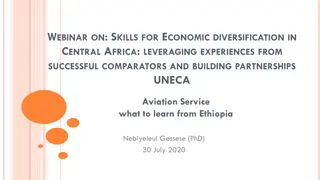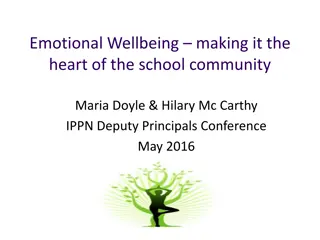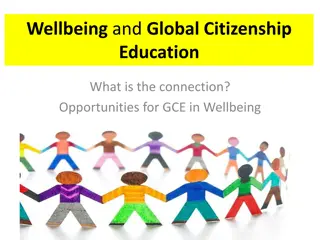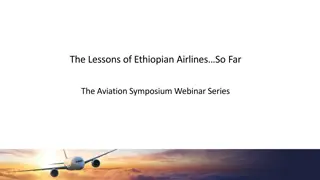Impact of Ethiopian Health Extension Program on Adolescent Health & Wellbeing
The Ethiopian Health Extension Program (HEP) has shown mixed evidence of impact on adolescent health, with improvements in knowledge about fertility and lower risk of early pregnancy. However, there are challenges such as low usage of sexual and reproductive health services among adolescents and regional disparities in contraceptive acceptance. This evaluation aims to assess HEP's potential in influencing various aspects of adolescent health and wellbeing.
Download Presentation

Please find below an Image/Link to download the presentation.
The content on the website is provided AS IS for your information and personal use only. It may not be sold, licensed, or shared on other websites without obtaining consent from the author.If you encounter any issues during the download, it is possible that the publisher has removed the file from their server.
You are allowed to download the files provided on this website for personal or commercial use, subject to the condition that they are used lawfully. All files are the property of their respective owners.
The content on the website is provided AS IS for your information and personal use only. It may not be sold, licensed, or shared on other websites without obtaining consent from the author.
E N D
Presentation Transcript
Impacts of the Ethiopian Health Extension Programme (HEP) on adolescent health and wellbeing William Rudgard Silinganisiwe Dzumbunu Rachel Yates Contact: william.rudgard@spi.ox.ac.uk
ETHIOPIAN CONTEXT FOR GIRLS Adolescent girls 2005 2015/16 Undernutrition (BMI <18.5) Contraceptive use (any method) Early pregnancy Child marriage FGM/C Secondary school enrollment 32% 18% 17% 60% 65% 18% 29% 34% 13% 40% 47% 34% CSA Ethiopia, 2005; CSA Ethiopia 2016; UNESCO Institute for Statistics, 2020
ETHIOPIAN HEALTH EXTENSION PROGRAMME Assefa, Y., Gelaw, Y.A., Hill, P.S. et al. Community health extension program of Ethiopia, 2003 2018: successes and challenges toward universal coverage for primary healthcare services. Global Health15, 24 (2019). https://doi.org/10.1186/s12992-019-0470-1
HEP EXPANSION Wang, H., Roman T., Gandham N. V. R., Chala Tesfaye C. 2016. Ethiopia Health Extension Program: An Institutionalized Community Approach for Universal Health Coverage. World Bank Studies. Washington, DC: World Bank. doi: 10.1596/978-1-4648-0815-9
RESEARCH AIM Evaluate the potential of HEP to impact across eleven domains of adolescent health and wellbeing
GENDER EQUALITY, HEALTH, AND EDUCATION No evidence: Not underweight, very good health, knowledge about STIs, <3hrs per day on domestic tasks, >4hrs per day in paid work
MAIN FINDINGS: HEALTH We find mixed evidence for impacts on health: Lower risk of early pregnancy and improved knowledge about fertility No observed link with self-reported health or knowledge about STIs Existing evidence for HEP: Higher ante-/ postnatal service uptake in mothers (Admassie et al, 2009) No observed link with contraceptive use in women 15-49 years (Admassie et al, 2009) Existing evidence for adolescent health services in Ethiopia: Low levels of SRH service use in adolescents (Binu et al, 2018) Common reports of lack of privacy in health centres (Haile et al, 2020) Regional differences in community acceptance of contraceptive use (Jones, 2016)
MAIN FINDINGS: CHILD MARRIAGE AND EARLY PREGNANCY We find evidence of lower risk of child marriage and early pregnancy Existing evidence for HEP from Nicola Jones / ODI: If I had not participated in the training and discussions about child marriage, childbirth, rape, venereal diseases, HIV/AIDS, I would not have completed my secondary education and I would have married as a child and had my own baby when I was still a child myself. 19-year-old girl (Jones et al, 2018) HEWs even come to school, to educate the students at the beginning of the academic year to protect them from unwanted pregnancy and early sexual relationships older adolescent boy (Jones et al, 2018) Jones N et al,. The Politics of Policy and Programme Implementation to Advance Adolescent Girls Well-being in Ethiopia. In: Empowering Adolescent Girls in Developing Countries. Taylor & Francis; 2018. p. 228
MAIN FINDINGS: EDUCATION We find evidence of higher probability of girls enrolment in education and higher numeracy and literacy at age 19 Existing evidence for HEP from Nicola Jones/ ODI: Secondary school girls who marry while still at school are vulnerable to dropping out since they are responsible for managing household activities and giving birth and taking care of children. Key informant (Jones et al, 2016) Existing evidence from Young Lives Ethiopia: Close link between parental illness and adolescent education in Ethiopia (Dinku et al, 2018) Jones N et al,. What works to tackle child marriage in Ethiopia: a review of good practice. Overseas Development Institute. 2016 Available from: https://www.odi.org/publications/10453-what-works-tackle-child-marriage-ethiopia-review-good-practice
POLICY IMPLICATIONS Local salaried female HEWs can be effective for: Impacting multiple dimensions of adolescent wellbeing Educating about the sensitive topics: child marriage and early pregnancy Is this also observed in other countries with community health workers, for example India? In order to achieve further impacts for adolescent girls. Review adolescent barriers in accessing health services including attitudes of health workers towards adolescent sexuality Ensure youth-friendly SRH awareness and services are a key priority within Ethiopia s new health education strategy Ensure youth-friendly SRH is a priority package within HEP model family training
FURTHER RESEARCH Unpack the causal pathway between HEP and adolescent outcomes for strengthening generalisability of findings to other settings Investigating the combination effects of receiving both HEP and other social programmes established by the Ethiopian government, for example the Productive Safety Net Programme. Understanding what the impact of Covid-19 has been on these outcomes using the next round of Young Lives data
Thank you! dsilinganisiwep@gmail.com rachel.yates@acceleratehub.org william.rudgard@spi.ox.ac.uk Special thanks to Dr. Elona Toska, Dr. Heidi St ckl, Prof. Mark Orkin, Prof. Lucie Cluver, Dr. Alula Pankhurst, and Dr. Nicola Jones for their intellectual contribution, to the Young Lives team for making their data publicly available, and Girls Not Brides for the opportunity to present in this forum
